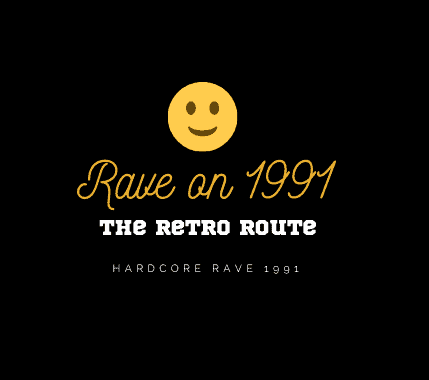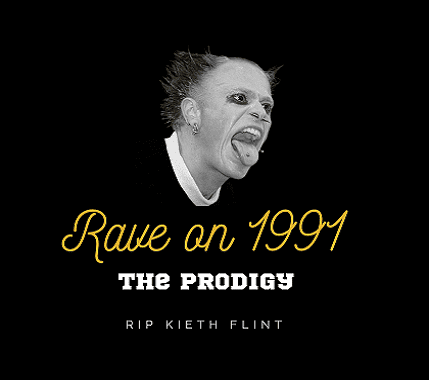How To Rave On: Check Out Orbital From 1991
Orbital, the British electronic music duo, was formed in 1991 by Paul Hartnoll and Phil Hartnoll. If you’re wondering how to rave on from 1991, think about how Orbital has remained on the scene for so many years.
Orbital emerged during the height of the rave culture and quickly gained recognition for its unique blend of techno, house, and ambient music. They’ve been going since 1991 on and off until now, a tremendous achievement.
Orbital’s distinctive sound was characterized by its intricate use of samples, loops, and synths, creating immersive and hypnotic compositions that were both danceable and experimental.
Have Orbital Split Up?
In 2004, Orbital initially announced that they would no longer be performing together as a live act, and they played their final show at the Big Chill Festival in August 2004, which was intended to be their last live performance.
However, in 2008, they announced their reunion and started performing together again, leading to the release of their album “Wonky” in 2012.
Wonky 2012 Tracklist
- One Big Moment
- Straight Sun
- Never
- New France” (featuring Zola Jesus)
- Distractions
- Stringy Acid
- Beelzedub
- Wonky” (featuring Lady Leshurr)
- Where Is It Going?
- Tiny Foldable Cities
- Surrender
In 2014, Orbital announced another hiatus, citing creative differences and the need for a break from performing. However, in 2017, they announced their return with a new album titled “Monsters Exist,” which was released in 2018, followed by a series of live performances.
Monsters Exist’s Tracklist
- Monsters Exist
- Hoo Hoo Ha Ha
- The Raid
- P.H.U.K.
- Tiny Foldable Cities
- Buried Deep Within
- Vision OnE
- The End Is Nigh
- There Will Come a Time” (featuring Prof. Brian Cox)
- Kaiju
- A Long Way from Home
Orbital has returned and placed emphasis on a new album which came out in February 2023 called Optical Delusion. I’ll be reviewing this more towards the middle of this year giving it time to gain momentum creating an impression on EDM.
The Optical Delusion Tracklist
- Orbital – Optical Delusion (2023)
- Ringa Ringa (The Old Pandemic Folk Song)
- Day One
- Are You Alive?
- You Are the Frequency
- The New Abnormal
- Home
- Dirty Rat
Orbital’s – First Album
Their first album in 1991 was called ”Orbital” from where there was no mistake which band had produced the label. Two world-famous tracks on the album were called, “Chime” and “Belfast”
Orbital’s innovative approach to electronic music and its influential contributions continues to still resonate with fans and artists alike even today. Make no mistake the album became recognised worldwide in 1991.
The Whole Album is listed: Chime
- The Moebius
- Speed Freak
- Oolaa
- Desert Storm
- Fahrenheit 303
- Steel Cube Idolatry
- High Rise
- Chime
- Midnight
- Belfast
Belfast
Orbital’s track “Belfast” was a melodic sensational and emotional track that inspired many of us about the memories in Belfast during the 80s and early 90s. The track resonates with a meaning of togetherness.
The Hartnoll brothers, Paul and Phil, were deeply moved by the ongoing conflict That captured the emotions and tensions associated with the situation. The raver has captured the message on how to rave on as Orbital has continued to create tracks.
The track features a haunting and evocative melody, with samples of news reports, sirens, and vocal chants, which aim to convey the sense of urgency, chaos, and yearning for peace amidst the conflict.
Orbital tracks expressed deep emotions and made a powerful statement for peace much of what the rave scene stands for today.
Chime
“Chime” embodies the spirit of the time and showcases Orbital’s ability to combine innovative electronic elements with infectious melodies and rhythms, which helped establish them as pioneers in the electronic music scene.
The track was inspired by the hypnotic rhythms, repetitive beats, and uplifting melodies that were characteristic of the dance music of that era.
Chime drew inspiration from the experimental and pioneering spirit of electronic music, pushing the boundaries of what was possible with synthesizers, sequencers, and drum machines to create their unique sound.
Possible Mixing Strategies For Chime
Synthesizers
After a thorough analysis of Orbital’s style of production, I’ve come across some interesting groundwork you could adapt to create some new tracks.
Orbital likely used analogue or digital synthesizers to create the main melodic elements of the track. They may have used techniques such as oscillator modulation, filter sweeps, and envelope shaping to sculpt the unique and evolving sounds heard in “Chime.”
Sequencing
Sequencers are electronic devices or software programs that allow musicians to create repeating patterns of notes or rhythms.
Orbital may have used sequencers to program the intricate melodic sequences and rhythmic patterns that characterize “Chime.” This could have involved manually inputting MIDI data or using hardware sequencers to trigger synthesizer sounds.
Sampling
sampling is a technique where pre-recorded sounds or snippets of music are captured and manipulated to create new sounds.
Orbital could have sampled various sources, such as drum hits, vocal snippets, or other sound effects, to create the distinctive textures and layers in “Chime.” They may have used hardware samplers or software samplers to trigger and manipulate these samples in real time.
Drum programming
The rhythmic foundation of “Chime” is built on pulsating beats and grooves. Orbital may have used drum machines or drum sample libraries to create the drum patterns heard in the track.
They could have programmed the drums using step sequencers, MIDI controllers, or other drum programming techniques to achieve the desired rhythm and groove.
Effects Processing
Effects processing plays a crucial role in shaping the overall sound of electronic music. Orbital may have used various effects processors, such as reverb, delay, chorus, and distortion, to add spatial depth, texture, and character to the synthesizer sounds, samples, and drums in “Chime.”
These effects could have been applied during recording, mixing, or post-production to achieve the desired sonic qualities.
Mixing and Mastering
The final step in the production process involves mixing and mastering the track to achieve a polished, balanced, and cohesive sound. Orbital may have used mixing techniques, such as EQ (equalization), compression, panning, and volume automation, to blend and balance the different elements of “Chime.”
They may have also used mastering techniques, such as limiting, to ensure the track is optimized for playback on various audio systems.
Technical Limitations

Seems like Orbital has been going on forever showing us how to rave on with their continued album releases.
Bring It On!
It’s important to note that the specific techniques used by Orbital in creating “Chime” may not be known with certainty, as the production process can vary from artist to artist and may also be influenced by technological limitations of the time.
However, Orbital’s music and performances were influential in the rave culture of its time, and their innovative approach to electronic music and live performances earned them a reputation as pioneers in the genre.
We must learn how to rave on and combine the past with the future with fantastic bands such as Orbital as an inspiration. The music hasn’t been replicated as such and still lives on today with both modern-day ravers and those of the past.






